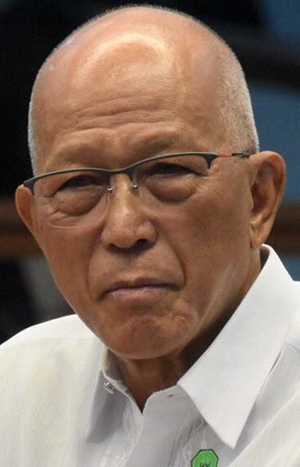
Defense Secretary Delfin Lorenzana has called for a review of the 1951 Mutual Defense Treaty (MDT) with the United States to clarify the Philippines on its ambiguities and possibly incorporate provisions that could directly deal with security issues in the West Philippine Sea (WPS) against China.
The defense chief, who is in the US for the 70th anniversary of the MDT, said that unlike Japan’s security agreement with the Americans which covered the Japanese-claimed and occupied Senkakus being claimed by Beijing, the defense treaty is silent on the WPS, which is also a subject of China’s claims.
“Much is to be desired in terms of the 70-year-old alliance, given what is happening in the South China Sea and beyond, not to mention the Philippines’s commitment to cultivate a more balanced relations with other countries in the region,” Lorenzana said at the Center for Strategic and International Studies in Washington, DC.
While he acknowledged American officials’ consistent pronouncements of “iron clad” commitment to the defense of the country and China’s attack in the WPS would automatically active the MDT, Lorenzana wanted a “reiteration and further clarification of the precise extent of American commitments to the Philippines” under the treaty.
“This is immensely relevant against the backdrop of rising tensions in the South China Sea, including the prospect of a Chinese Air Defense Identification Zone (ADIZ) declaration, forcible expulsion of Filipino troops stationed over the Second Thomas Shoal [part of Philippine continental shelf] or reclamation and militarization of the Scarborough Shoal,” he said.
Pushing it further, the defense secretary wanted “revisions and additions” in the MDT and on other defense and security agreements between the two countries in order for the Philippines have a “maximum possible cooperation and interoperability” in dealing with so-called Chinese-borne “gray zone” threats in the WPS.
He identified one of the gray zone threats as that of the “state-sanctioned/supported maritime militia forces that have been intimidating smaller claimant states and their fishermen in recent years.”
“The US Ambassador to the Philippines Sung Kim has publicly suggested that the MDT could also apply to this type of hybrid warfare strategy deployed by the likes of China. But we need more specific operational discussions and, eventually, joint activities within the bounds of our existing defense commitments,” Lorenzana said.
The defense chief also hinted for a more robust assistance in terms of assets and equipment from the US, noting that while the country is a treaty partner, it has been getting less compared with the non-treaty allies of the US.
“We believe it’s important that we go beyond ‘Vietnam era’ hardware in bilateral grants and purchases and, accordingly, move towards acquisition of evermore advanced weapons systems that will allow us to have a ‘minimum deterrence’ capability against external threats and adversaries,” Lorenzana said.
“Non-treaty allies countries have been receiving billion-dollar military aid and advanced weapons systems from the US. Perhaps, a long-time ally like the Philippines, facing major adversaries in Asia, deserves as much, if not more assistance and commitment,” he added.

